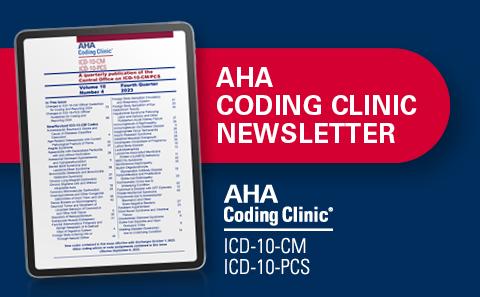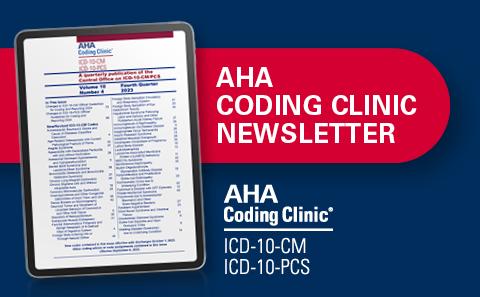
Highlights of AHA’s Coding Clinic Fourth Quarter 2024 Release for ICD-10-CM and ICD-10-PCS
ICD-10; ICD-10-CM; ICD-10-PCS; medical coding; Q2; 2024; Coding Clinic

The Fourth Quarter 2024 newsletter of AHA Coding Clinic for ICD-10-CM and ICD-10-PCS was released October 1, 2024. Let’s explore some of the highlights!
The fourth quarter newsletter provides a summary of Fiscal Year (FY) 2025 ICD-10-CM and ICD-10-PCS changes effective October 1, 2024. There are 252 new ICD-10-CM codes and 371 new ICD-10-PCS codes. In addition, there are 13 revised and 36 deleted ICD-10-CM codes. There are no revised ICD-10-PCS code titles, and 61 ICD-10-PCS codes have been deleted from the classification.
Within ICD-10-CM, a new subcategory has been created to identify three classes of obesity, which is defined by excessive fat deposits that can impair an individual’s health status. Obesity is a chronic complex disease in adults and children that can cause an intensified risk of heart disease, diabetes mellitus type 2, hypertension, high cholesterol, breathing issues such as asthma and sleep apnea, problems with reproduction, joint disease, and certain cancers. There are factors that can contribute to excessive weight gain, such as genetics, physical activity levels, eating patterns, sleep routines, and the use of certain medications. The new classes differentiate between low, moderate, and high-risk obesity based on a patient’s body mass index (BMI).
Additionally, four categories of Z codes have been updated, including a new code for an encounter for sepsis-focused post-acute care to aid in recovery for patients who have been successfully treated for sepsis, and 2 new social determinant of health codes to address insufficient health insurance coverage and insufficient welfare support.
Within ICD-10-PCS, table 5A0, Assistance of Extracorporeal Circulatory Filtration, now includes duration, function, and qualifier values to capture circulatory filtration when used during percutaneous thrombectomy.
The newsletter also includes 17 questions and answers related to the following topics:
- Type 1 Presymptomatic Diabetes Mellitus
- Hypoglycemia Level
- Carcinoid Heart Syndrome (Disease) (Hedinger Syndrome)
- Obesity due to Disruption of Melanocortin 4 Receptor (MC4R) Pathway
- Eating Disorders
- Pica in Adults
- Serotonin Syndrome
- Cement and Fat Pulmonary Artery Embolisms without Acute Cor Pulmonale
- Congenital Malformations of Aortic and Mitral Valves
- Disruption or Dehiscence of Internal Operation Wounds
- Bypass of Hepatic Artery and Splenic Artery to Lower Artery
- Lymphatic Bypass
- Lumbar Perforator Flap Breast Replacement
- Circulatory Filtration of Blood Pathogens
- Kerecis® Graft
Those are just the highlights! The official ICD-10-CM addenda has been posted on the Centers for Disease Control and Prevention (CDC) National Center for Health Statistics (NCHS) website, and the FY 2025 ICD-10-PCS updates, including the complete list of ICD-10-PCS code titles, addenda, and a conversion table showing changes from the previous year are available on the Centers for Medicare & Medicaid Services (CMS) website. Please read the Fourth Quarter 2024 AHA Coding Clinic for ICD-10-CM and ICD-10-PCS entirely for the best source of medical coding information to apply to professional coding.
